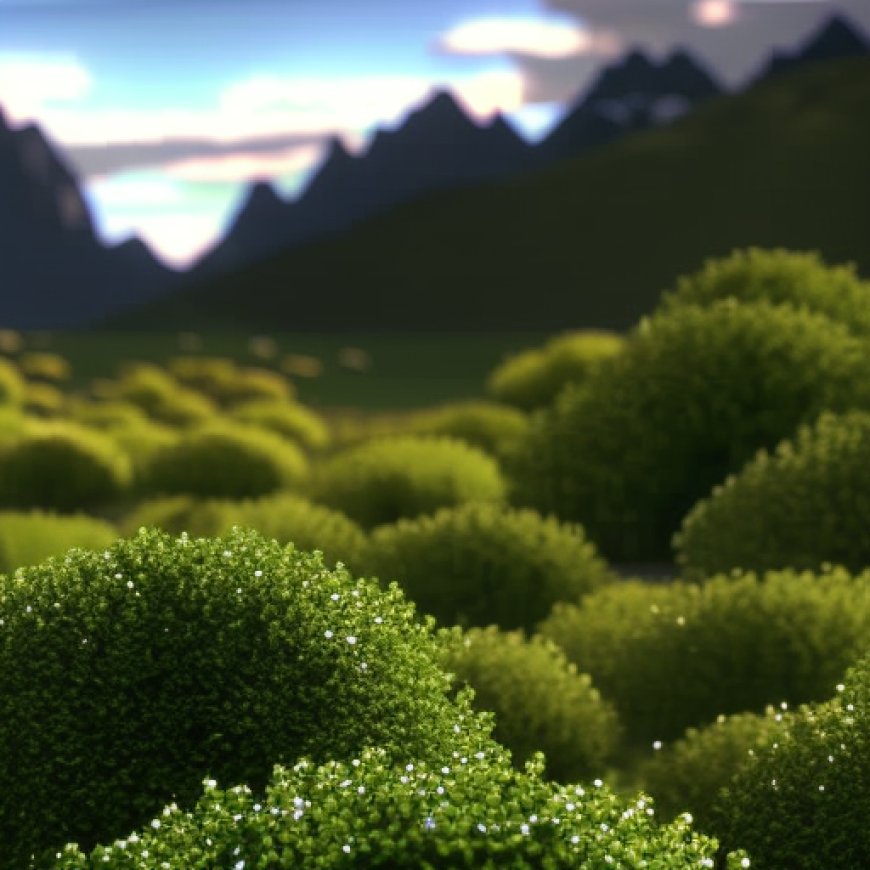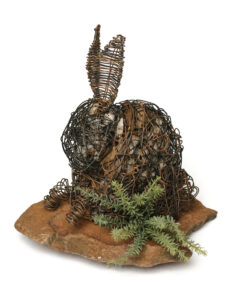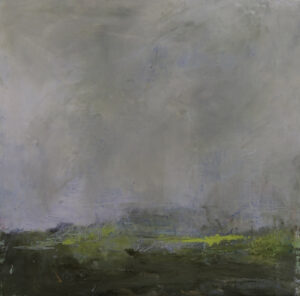Art exhibit showcases Washington’s shrub-steppe ecosystem – Northwest Public Broadcasting


Driving through central Washington might look like scrubland from the highway. Now, an art exhibit in Tieton is highlighting the landscape’s beauty.

A sculpture of a pygmy rabbit by Janet Beuge. The piece is on display at the Boxx Gallery through Sept. 29. (Courtesy of Cowiche Canyon Conservancy)
When you get up close to it, there’s this incredible tapestry of wildlife that inhabits the shrub-steppe and needs the shrub-steppe to survive,
The conservancy is helping put on the show at the Boxx Gallery. The show runs through this Sunday. The gallery is open on Fridays from 1 to 5 p.m. and on the weekend from 11 a.m. to 4 p.m.
Images of the Shrub-Steppe
“Images of the Shrub-Steppe” is the eighth annual juried art exhibit that features paintings, sculptures, photography, and collage.
Art is and has been a way that people connect with nature and share their experience of the wonder of the natural world,

“The Promise of Spring” by artist Gayle Scholl. The painting is featured in the “Images of Shrub-Steppe” juried art exhibition. (Courtesy of Cowiche Canyon Conservancy)
Viewers can connect to the natural world while contemplating a sculpture of a pygmy rabbit or an impressionistic painting of “The Promise of Spring,” by artist Gayle Scholl.
Whether it’s a specific flower or an animal that lives on the landscape, I think that gives people a different window that we may not see when we’re out walking alone on a trail,
This weekend, a talk by Zach Schierl will cover two lava flows that met in Tieton and formed the shrub-steppe landscape.
The focus will be on the two main lava flows that underlie the valley: the Columbia River Basalts and the Tieton Andesite, which form the backdrop for some of my favorite images from the Yakima area,
Two of Schierl’s photographs are featured in the exhibit.
I’ve thoroughly enjoyed photographing this unique and wide-open landscape (especially during spring wildflower season!) since we moved to Yakima in 2019,
Hopkins said she hopes the art will bring people closer to the threatened landscape around them.
The Threatened Shrub-Steppe Ecosystem
Less than 20% of shrub-steppe habitat is left in the Columbia Basin, Hopkins said. It’s home to sage grouse and burrowing owls.
For the survival of the species that rely on the shrub-steppe, they need connected tracts of land and the ability to migrate from one space to the other as climate conditions change,
SDGs, Targets, and Indicators Analysis
1. Which SDGs are addressed or connected to the issues highlighted in the article?
- SDG 15: Life on Land
The article discusses the arid shrub-steppe ecosystem in Washington, which is a diverse landscape that is in trouble due to fragmentation caused by agriculture and development. This aligns with SDG 15, which focuses on protecting, restoring, and promoting sustainable use of terrestrial ecosystems, sustainably managing forests, combating desertification, and halting biodiversity loss.
2. What specific targets under those SDGs can be identified based on the article’s content?
- Target 15.1: By 2020, ensure the conservation, restoration, and sustainable use of terrestrial and inland freshwater ecosystems and their services, in particular forests, wetlands, mountains, and drylands, in line with obligations under international agreements.
- Target 15.5: Take urgent and significant action to reduce the degradation of natural habitats, halt the loss of biodiversity, and, by 2020, protect and prevent the extinction of threatened species.
The article highlights the need to protect and restore the shrub-steppe habitat, which is a terrestrial ecosystem. This aligns with Target 15.1, which aims to ensure the conservation and sustainable use of terrestrial ecosystems. Additionally, the article mentions that the shrub-steppe ecosystem is in trouble and that certain species, such as sage grouse and burrowing owls, are threatened. This aligns with Target 15.5, which focuses on reducing habitat degradation, halting biodiversity loss, and preventing the extinction of threatened species.
3. Are there any indicators mentioned or implied in the article that can be used to measure progress towards the identified targets?
- Indicator 15.1.1: Forest area as a proportion of total land area
- Indicator 15.5.1: Red List Index
The article does not explicitly mention any indicators. However, Indicator 15.1.1, which measures the forest area as a proportion of total land area, can be relevant to assess the conservation and restoration of terrestrial ecosystems, including the shrub-steppe habitat. Indicator 15.5.1, the Red List Index, can be used to measure progress in preventing the extinction of threatened species, such as sage grouse and burrowing owls.
Table: SDGs, Targets, and Indicators
| SDGs | Targets | Indicators |
|---|---|---|
| SDG 15: Life on Land | Target 15.1: By 2020, ensure the conservation, restoration, and sustainable use of terrestrial and inland freshwater ecosystems and their services, in particular forests, wetlands, mountains, and drylands, in line with obligations under international agreements. | Indicator 15.1.1: Forest area as a proportion of total land area |
| SDG 15: Life on Land | Target 15.5: Take urgent and significant action to reduce the degradation of natural habitats, halt the loss of biodiversity, and, by 2020, protect and prevent the extinction of threatened species. | Indicator 15.5.1: Red List Index |
Source: nwpb.org








